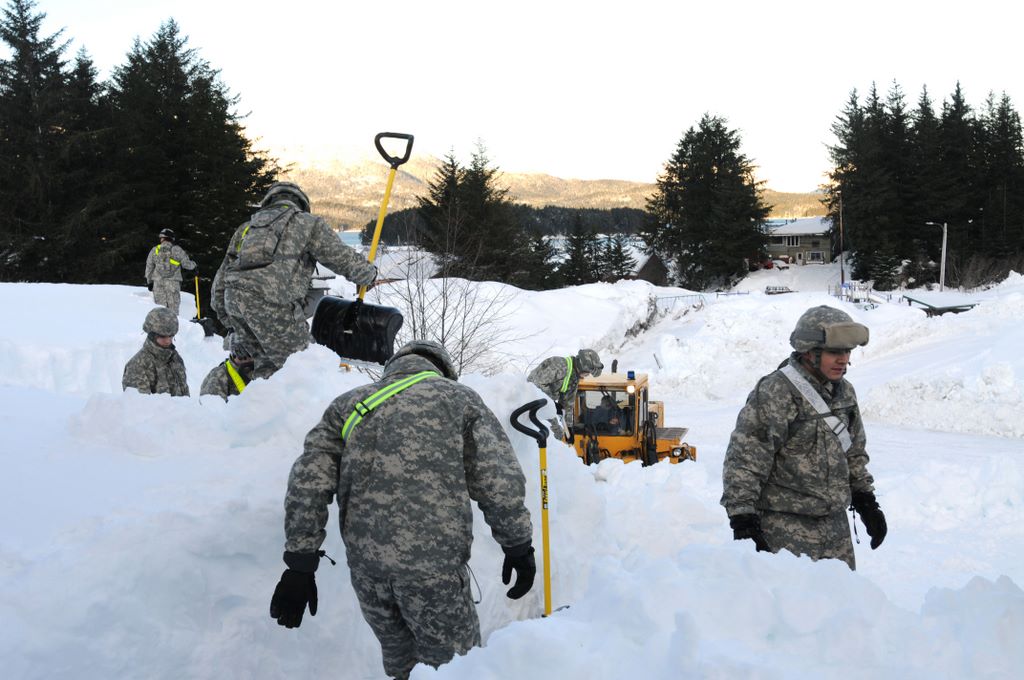
What's Behind Alaska's Deep Freeze

While residents of the lower 48 states have enjoyed an unseasonably warm winter, Alaskans are freezing in their snow boots, with temperatures dipping to a whopping 30 degrees below average for this time of year.
The weather today (Jan. 30) in Alaska is bitter cold. This morning, the thermometer in Fort Yukon, Alaska, stood at minus 60 degrees Fahrenheit (minus 51 degrees Celsius). Fort Yukon is 145 miles (233 kilometers) northeast of Fairbanks, where the average high temperature this January has been minus 17.7 F (minus 27.6 C), according to the U.S. National Oceanic and Atmospheric Administration.
The average low has been minus 35 F (minus 37.2 C). To put that in perspective, car tires will shape-shift from round to square at minus 45 F (minus 42.7 C).
"You're going to ride around like a Flintstone car until they round off again," said Christopher Cox, a meteorologist with the National Weather Service office in Fairbanks.
Conspiring forces
Several atmospheric forces have come together to create Alaska's cold winter, Cox said.
A climate pattern known as the Pacific Decadal Oscillation is under way, which tends to keep Alaska cooler than normal. La Niña, a cooling of the waters of the equatorial Pacific,has also been in play, and it typically creates colder temperatures for Alaska.
Get the world’s most fascinating discoveries delivered straight to your inbox.
In the last few days to weeks, a mega-blocking pattern has also contributed by trapping Arctic air over Alaska.
"We've had that set up multiple times this winter and that's allowed Alaska to get quite chilly," Cox told OurAmazingPlanet.
Rough winter
Alaska has had rough weather all winter. In early November, a ferocious winter storm hit their coast. The storm, a cross between a hurricane and a blizzard, created huge waves on the Bering Sea that came crashing to the shore.
On Thursday (Nov. 16), the temperature in Fairbanks sank to minus 41 F (minus 40.5 C), the city's first minus 40 F day of the year. It was also the first day of 40-below temperatures for the month of November since 1994.
Alaska has seen more than enough snow to go with the cold. After a jaw-dropping blizzard swept through the Prince William Sound on Jan. 9, a record-breaking 81.3 inches (207 centimeters) of snow had fallen in Anchorage this winter, according to the NWS. The total is a record for most snow from July to Jan. 11. Heavy snow forced the cancellation of the Copper Basin 300 dog sled race after wiping out a stretch of trail.
Every time a snow-making storm has blown into the Prince William Sound this year, Anchorage has been in the bull's-eye for snowfall. The big storms have been created by low-pressure systems in Prince William Sound, which brought moisture that then mixed with cold wind from a high-pressure system.
Even the tiny town of Nome made the news when winter weather swept its final shipment of fuel out to sea. A Russian fuel tanker needed a Coast Guard icebreaker escort to bring emergency fuel to the town of 3,500.
You can follow OurAmazingPlanet staff writer Brett Israel on Twitter: @btisrael. Follow OurAmazingPlanet for the latest in Earth science and exploration news on Twitter @OAPlanet and on Facebook.
